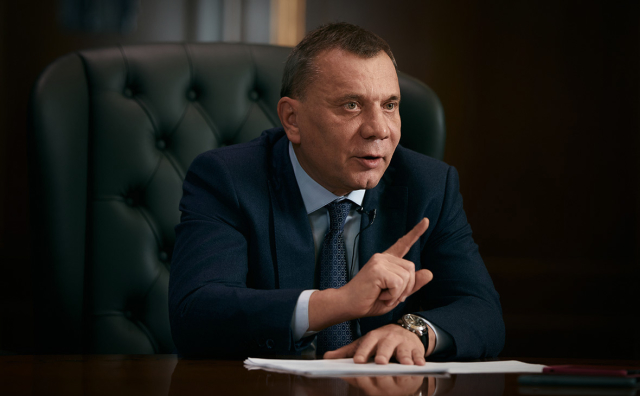Deputy Prime Minister Yuri Borisov promised the appearance of unconventional types of weapons in Russia
The State Armament Program (GPV) will be aimed at creating non-traditional types of weapons, including directed energy weapons, kinetic weapons, as well as control systems using artificial intelligence and robotic complexes.
As reported on the Kremlin's website, this was told by Deputy Prime Minister Yuri Borisov at a meeting with President Vladimir Putin. "The work on preparing the initial data for the next GPV has been completed, by mid-2023 it will be formed and submitted for approval. The new GPV will be aimed at creating qualitatively new, including unconventional types of weapons, including directed energy weapons, kinetic weapons, as well as control systems using artificial intelligence and robotic complexes," a statement on the Kremlin's website says.If you go beyond the stingy details of the statement, then you can put together a small puzzle. During the special operation in Ukraine, we are already talking about the effectiveness of the use of high-precision weapons, These are ship-based cruise missiles "Caliber", aviation X-555, X-101 and "Dagger", which allow the country to inflict massive strikes on the enemy's infrastructure.On the evening of April 4, the Ministry of Defense reports the destruction of large fuel storage facilities in Konstantinovka, Mykolaiv region, Slavuta, Rivne region and Ternopil. The strikes were carried out with high-precision air-based ammunition. The destroyed facilities provided fuel supplies to the AFU units in the Mykolaiv and Donetsk directions.
Another blow was struck at the Balovnoye airfield in the suburbs of Nikolaev. The aircraft parking lot and fuel storage were destroyed. The missiles also hit the Vasilkov military airfield in the Kiev region. This time, the strike hit the Center for Warning and Control of Aviation and Air Defense of the AFU Air Forces.The use of high-precision tools makes it possible to avoid unnecessary losses on the ground. However, Yuri Borisov speaks about a completely different level of weapons. Kinetic is something that will be used in space.
The main feature of such systems is the increased speed of sending the striking element to the target. We know the American "railgun", which accelerates an inert warhead to a speed exceeding 3 km per second (hypersound starts at five). The problem of creating such systems is in providing them with energy supply. Corny – electricity. If you look at the footage of the tests of the American cannon, first of all you should pay attention to the battery racks next to the device. They provide the electrical impulse that accelerates the projectile.It is not the first year in Russia that work has been going on to create such a reserve. Everything rests on the so-called "supercapacitors": devices capable of instantly accumulating and giving off current. Supercapacitors have already been developed by TEEMP. The products have a specific power of 100 kW/kg and can work even at extreme temperatures. They have a millionth number of charge-discharge cycles, which allows them to be integrated into any on-board equipment of a car, airplane or ship. The problem is that such systems are still prohibitively expensive or too large.
Another unconventional direction may be laser weapons. In December 2019, the world's first really working combat laser complex "Peresvet" was put on combat duty. There is still no precise understanding of whether it "burns" or "blinds" optical devices of aerial objects. But it is already obvious: the country is actively working on the development of this type of weapon.There was information in the media that work was underway in Russia on the long-forgotten aviation laser complex 1A2, created on the basis of the Il-76 military transport aircraft.
It was also reported that the scientific and production association "Astrophysics" (part of the holding "Shvabe") The forgotten project 1K17 "Compression" was brought back to life: a laser complex designed to counteract optoelectronic devices, missile homing heads and high-precision enemy ammunition. If in Soviet times it was located on the basis of a tank, now it fits in the "body" of the Tiger armored car.Robotics and artificial intelligence systems are also a priority. If you look at the exposition of the exhibition-forum "Army" in Kubinka near Moscow, it becomes obvious that large-scale work is underway in Russia to create "soulless" combat units.
However, today they are still controlled by a human operator. Perhaps Yuri Borisov is already talking about self-decision-making machines. In any case, there are similar precedents. These are cruise missiles. For example, "Granite" and "Onyx", capable of independently building tactics of a group attack on a target. They think in patterns embedded in memory, but with the development of self-learning programs and neural networks, everything can change quickly.Interestingly, against this background, the United States decided to abandon the development of new cruise missiles. This is reported by the Japanese newspaper Nikkei, citing sources in the Pentagon, RIA Novosti reports. Instead, the US administration will focus on deploying ballistic missiles with small nuclear charges on submarines. According to one of the sources, these weapons are necessary to deter Russia and China. And the cost of developing new types of cruise missiles is high and has lost relevance at the moment. Judging by the footage of the special operation in Ukraine, it is impossible to agree with such a statement

